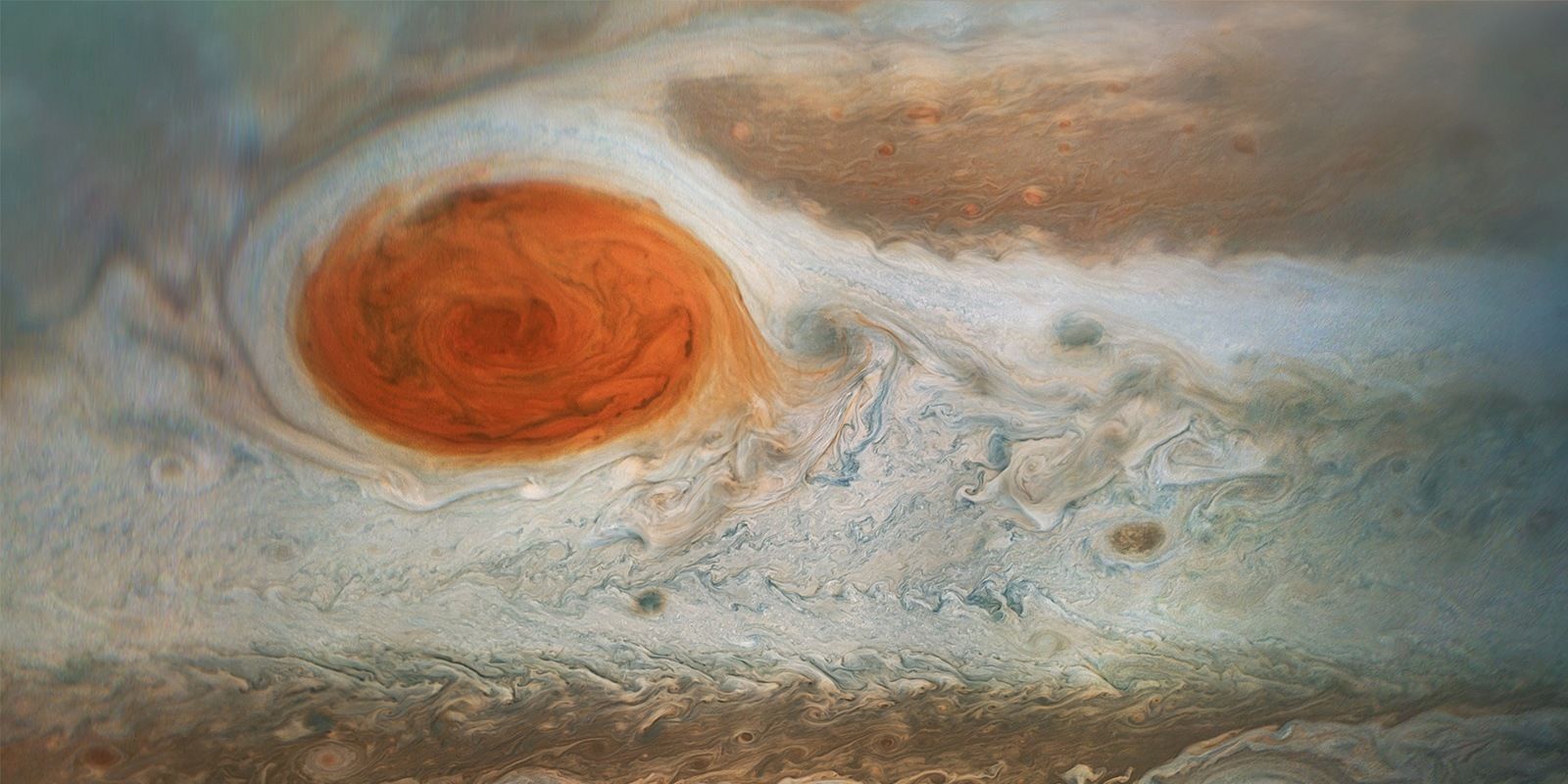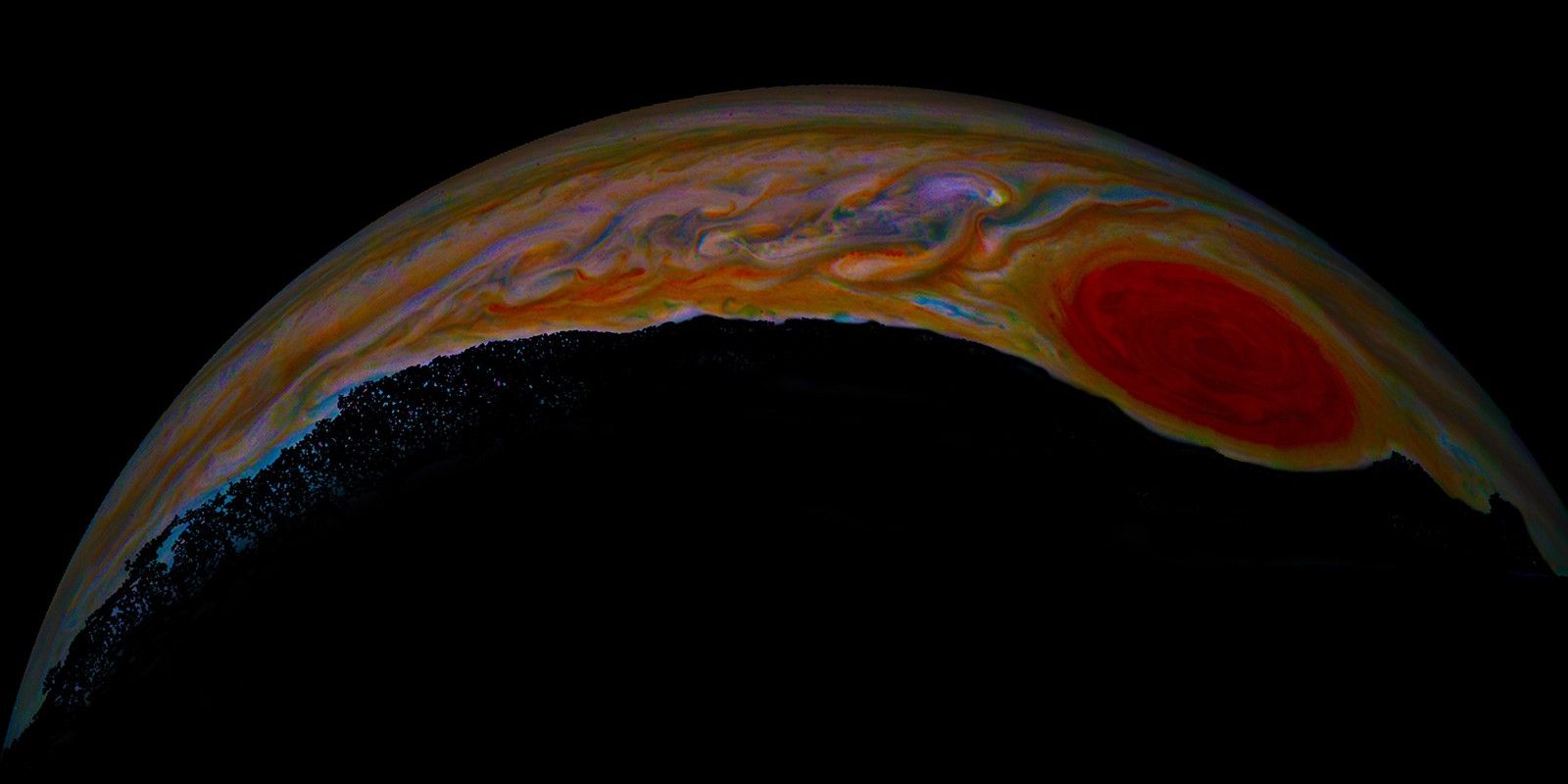NASA’s Juno mission has unearthed terrifying new details about the Great Red Spot region on Jupiter, revealing that the massive vortex cloud is actually about 300-500 kilometers deep and has shed more light on its structure as well. The Great Red Spot — one of the most distinctive features of the planet — is actually a massive storm in which the clouds spin counterclockwise at an extremely high speed of around 400 miles per hour and has a shade that is somewhere between crimson and dark orange.
The ‘anticyclone’ is roughly 1.3 times as wide as the Earth’s diameter and is said to be swirling over Jupiter’s skies for a while. Jupiter has abundant Hydrogen and Helium, but so far, scientists have been unable to pinpoint the reason behind the brilliant crimson shade of the storm. One theory says that cosmic rays might chemically tweak the ammonium hydrosulfide in its atmosphere to produce new compounds that impart it a distinct color. However, images captured by the Hubble telescope recently revealed that the Great Red Spot storm is getting faster.
Now, new findings arising from data collected by the Juno probe have revealed that the cyclones on Jupiter are warmer at the top and have a lower atmospheric density. At the same time, the colder region below exhibits higher atmospheric density. However, anticyclones like the Great Red Spot — believed to be one of the longest-lived of all the planetary vortices — are warmer at the bottom and colder at the top. More importantly, the data reveals that the Great Red Spot is much deeper than previously thought as it extends anywhere between 300 to 500 kilometers (or 186 to 310 miles deep) below the clouds. Interestingly, just a few months ago, NASA spotted signs of water in Jupiter’s moon Ganymede.
If Put On Earth, The Storm Would Touch The Space Station
While flying over the Great Red Spot, the Juno spacecraft measured the gravitational field in the region to estimate the storms’ depth. These readings helped scientists calculate the maximum depth of the anticyclone. The team then used the readings taken by the Microwave Radiometer (MWR) instrument aboard the spacecraft to measure the planet’s emitted flux at different depths, starting from the atmosphere’s top and all the way down to 600 kilometers below the visible clouds. Jupiter’s atmosphere is mainly made up of molecular hydrogen and helium with small amounts of methane, ammonia, and hydrogen sulfide, but its moon Europa is thought to harbor a massive amount of ice with water below it that might harbor some form of life.
The latest findings have also opened a “treasure chest of new information about Jupiter’s enigmatic observable features,” notes Lori Glaze, Director of NASA’s Planetary Science Division. For the first time, scientists have also been able to create a detailed 3D map of Jupiter’s violent atmosphere to reveal how the belts and zones of clouds on the planet function. For the unaware, the white and red lines seen in Jupiter’s imagery are actually these bands and zones separated by east-west winds moving in opposite directions. These winds, also known as Jet Streams, are much deeper than the Great Red Spot. These jet streams are about 3,200 kilometers deep, but researchers are still unclear why there is such a vast discrepancy. However, Jupiter is far from being the planet with the most extreme atmosphere. A recent study about the planet WASP-76b revealed that temperatures on this infernal land exceed the 2,400 centigrade mark, and it is so hot here that the clouds rain iron.
Source: NASA



